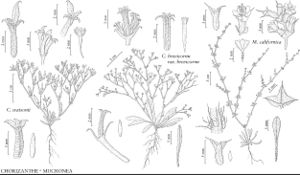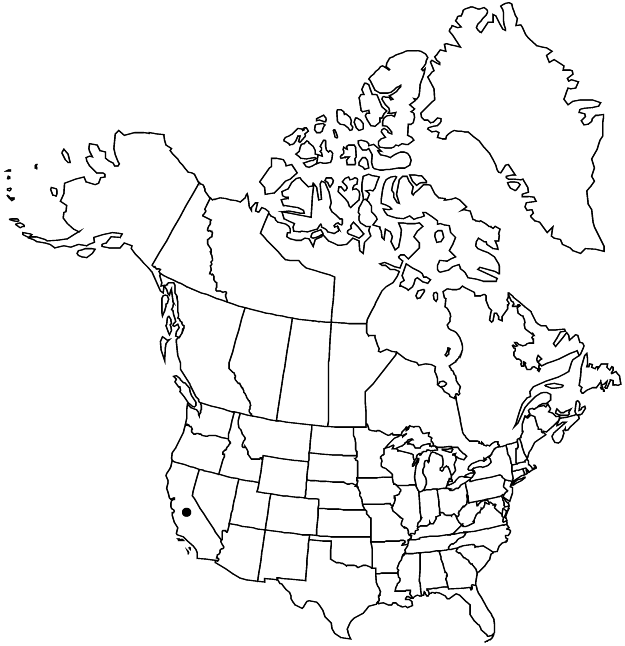Mucronea californica
Trans. Linn. Soc. London 17: 419, plate 20. 1836.
Plants (0.3–)0.5–3(–5) ×1–6(–8) dm. Leaves: petiole 0.5–3 cm; blade narrowly spatulate to obovate, (0.5–)1–5 × (0.1–)0.2–0.8(–1.2) cm. Inflorescences: bracts 3(–5), unilateral, spreading to nearly erect, connate for 1/2 their length, triangular to ovate or oblong, becoming acerose only at terminal nodes and then linear to linear-lanceolate, 0.5–1(–2) cm, apex acute to obtuse; awns 1–2.5(–3) mm. Involucres 1–3, (2–)3(–4)-angled, obscurely ribbed and not corrugate, not ventricose, 2.5–5(–7) mm; teeth (2–)3(–4), spreading to strongly divergent, glandular or slightly hirsute; awns divergent, (0.5–)1–2.5(–3) mm. Flowers 1(–2); perianth 1.5–2.5(–3) mm, pubescent at least near base abaxially; tepals oblong, entire apically; stamens 6–9; filaments 1–2(–2.5) mm; anthers 0.5–0.7 mm. Achenes 2–3 mm. 2n = 38.
Phenology: Flowering Mar–Aug.
Habitat: Sandy flats and slopes, coastal grassland, coastal sage and chaparral communities, pine-oak woodlands
Elevation: 0-1000(-1400) m
Discussion
Mucronea californica is found mainly along the Pacific Coast from San Luis Obispo County south to San Diego County and inland in the southern Coast and Transverse ranges from Monterey County to Los Angeles and western Riverside County. Given the extensive urbanization in southern California, California spineflower is now uncommon there. Along the coast, and especially in San Luis Obispo and Santa Barbara counties, it can be weedy in deep, moving sands. Mucronea californica and M. perfoliata sometimes are found growing together without indication of intergradation.
Selected References
None.

